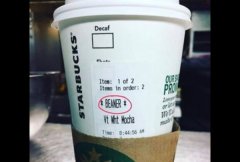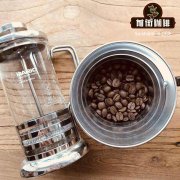What is decaf coffee? what are its characteristics?
As early as the Stone Age, humans began to use caffeine. Early people discovered that chewing the seeds, bark or leaves of certain plants had the effect of reducing fatigue and refreshing. It wasn't until many years later that it was discovered that soaking these plants in hot water increased the effectiveness of caffeine. many

Cultures have myths about ancient people discovering these plants. Coffee containing trace amounts of caffeine. Coffee contains many ingredients and substances, among which caffeine has a significant impact on the human body. Decaf coffee is the best choice for many coffee drinkers who are not physically fit to consume caffeine. Decaf coffee is roasted in the same way as regular coffee, but requires special decaffeination treatments. At present, there are two main ways to remove caffeine.
Swiss water treatment is a low-cause treatment method that does not use any chemical solvents at all. The impact on the environment and human health is minimal. In addition, this treatment method has a special flavor saturated water Flavor-charged Water production process is the biggest difference from chemical solvent treatment method. In theory, Swiss water treatment produces decaf beans with very low flavor loss. Although we know how much, there are still manifestations that affect aroma and viscosity. But in the long run, this is the best example of environmental protection.
There is also a special decaffeination process, which uses carbon dioxide supercritical extraction of caffeine. In theory, this approach should preserve flavor better than all other low-factor treatments. It is understood that before extracting caffeine, it is necessary to use a high temperature and high pressure steam environment to open the pores on the surface of raw beans to successfully bring out caffeine. So there's also the possibility of flavor loss, just how much we'll have to drink to know. At present, it is difficult to see traces of coffee beans treated with supercritical carbon dioxide in China. Recently, it is said that companies with patents for this technology have begun to expand outward. The chances of seeing such low-caffeine beans in the future may increase greatly.
Generally speaking, Arabica coffee beans contain 1.1% to 1.7% caffeine, while Robusta coffee beans contain 2% to 4.5% caffeine. Caffeine. Decaf coffee is regulated to contain no more than 0.3% caffeine in brewed coffee. That means no more than 5 milligrams of caffeine in a cup of decaf coffee.
Decaf coffee beans are more susceptible to oxidation because they undergo more processing than normal coffee beans. When buying decaf coffee beans, be sure to recognize the expiration date, do not buy expired products, and do not buy too much at once, it is best to buy only one week's amount; use up as soon as possible after unpacking. ? Caffeine is an alkaloid, hot cocoa, energy drinks after exercise, cola, coffee tea and other natural drinks, will contain a certain amount of caffeine. Even in nature, most plants contain this substance. Caffeine has the effect of stimulating the central nervous system and temporarily restoring some physical strength.
Caffeine is a central nervous system stimulant and a metabolic stimulant. Caffeine is used both as a drink and as a medicine to refresh and relieve fatigue. The exact amount of caffeine needed to produce an effect varies from person to person, depending on body type and caffeine tolerance. Caffeine begins to work in the body in less than an hour, and for a moderate dose of caffeine, the effects disappear in 3 to 4 hours. Caffeine consumption does not reduce the amount of sleep required; it only temporarily reduces the feeling of drowsiness. Because of these effects, caffeine is a performance enhancer: it boosts brain and body abilities. Caffeine is safe for humans, but it is toxic to some animals, such as dogs, horses and parrots, because their livers are much less able to break down caffeine than humans. Caffeine has a significant effect on spiders, far more than any other drug, so here's a tip: don't give your dog your coffee.
In general, Arabica beans are low in caffeine, with 1.1% to 1.7% caffeine, while Robusta beans contain 2% to 4.5% caffeine. Decaf coffee is regulated to contain no more than 0.3% caffeine in brewed coffee. That means a cup of decaf coffee contains no more than 5 milligrams of caffeine to be called decaf coffee, or decaf coffee.
Important Notice :
前街咖啡 FrontStreet Coffee has moved to new addredd:
FrontStreet Coffee Address: 315,Donghua East Road,GuangZhou
Tel:020 38364473
- Prev

Starbucks also spread discrimination against "nicknames written on paper cups" Beaner infuriating derogatory terms!
Professional coffee knowledge exchange more coffee bean information please follow the coffee workshop (Wechat official account cafe_style) Starbucks discrimination occurred again! According to CNN, staff of a restaurant in ─ Flinchucci (La Ca?ada Flintridge), Laconada, California, bought a cup of white chocolate mocha and an iced caramel macchiato at Starbucks on the 15th local time.
- Next

What is boutique coffee? what are its characteristics?
Now there is an advertisement for coffee that says, "the first generation drinks instant coffee, the second generation drinks espresso, and now let's enter the third generation to drink hand-made boutique coffee." As I mentioned earlier, it is impossible for a good baker to beautify mediocre coffee beans into high-grade coffee beans. Good beans can only be cut by heart, from the variety of the tree, the way of cutting, and then until the harvest is fully mature.
Related
- A complete list of coffee bean names and their meanings! What is Yejia Shefi coffee? Where is Mantelin coffee?
- What grade does Arida Manor Kaduai coffee beans belong to? What treatment is Arida ASD slow anaerobic sun exposure?
- The milk tea cup becomes smaller?! Overlord Tea Girl launches a new "Return to Yunnan" series
- Accused of selling counterfeit and high-priced coffee beans! Well-known boutique coffee brand "Oukelao" bowed and apologized!
- How to make espresso dumplings? Can I eat coffee and glutinous rice balls together?
- Save the unformed and stagnant powder cakes in one second! What is the problem with stagnant water in the powder bowl of the espresso machine?
- What does hand-brewed coffee stop mean? Why is it not recommended to make coffee by hand?
- Is it normal to smell like coffee? Why does coffee smell like alcohol? What's wrong with the strong smell of cold extract ice dripping ice brewed coffee?
- How to solve the problem that hand-brewed coffee extraction takes too long? Why is the water flowing so slowly when making coffee?
- The main points of making Australian white coffee, the proportion details, how does Australian white properly foam and blend the flowers?

